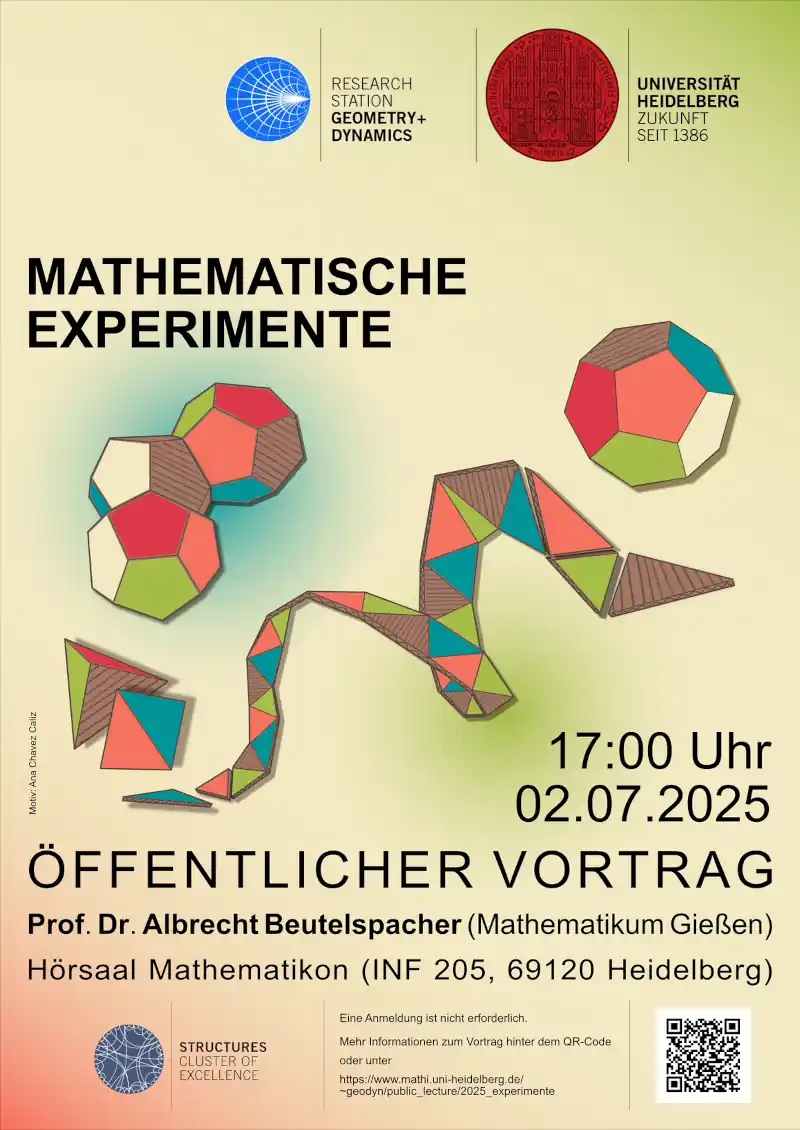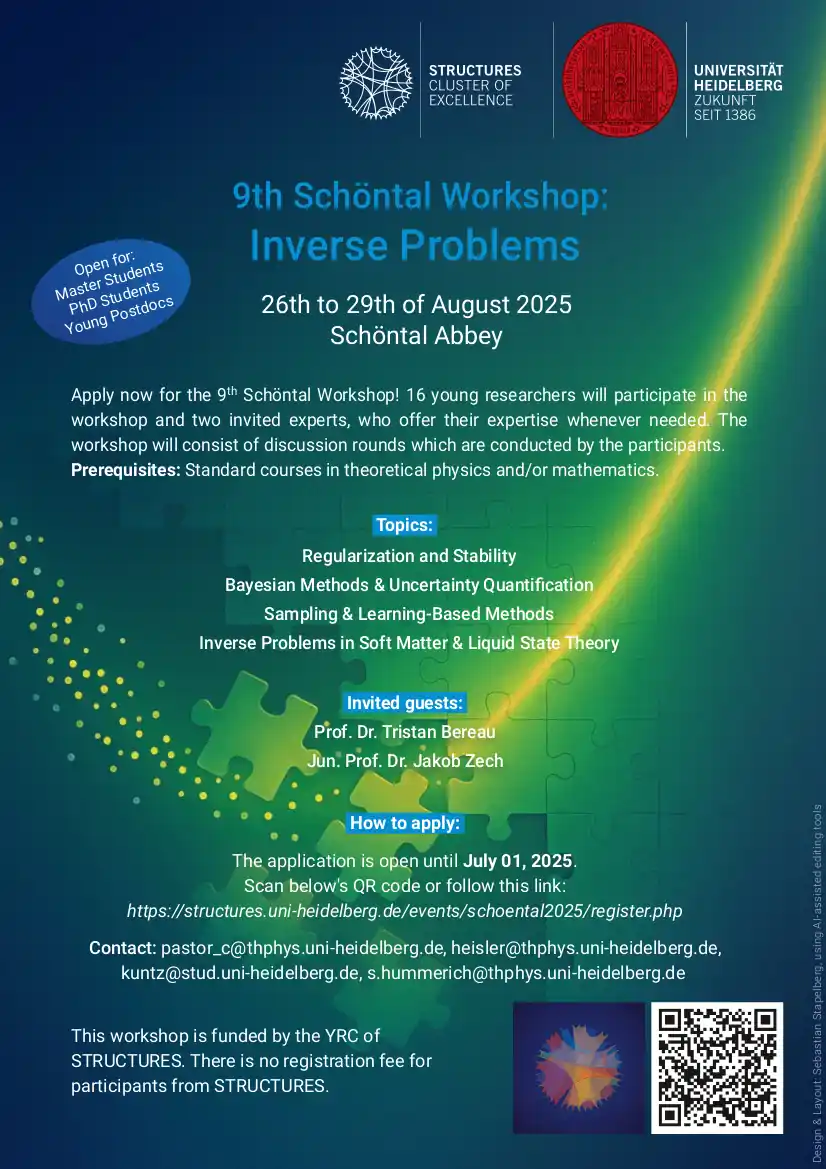Newsroom
Stay informed with our latest news and announcements on this page. For more in-depth content, we also encourage visitors to explore our bimonthly STRUCTURES Newsletter magazine, which features a variety of articles, interviews with members, and background information on our latest research and activities.
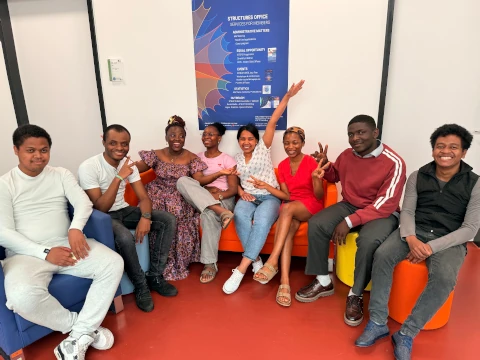
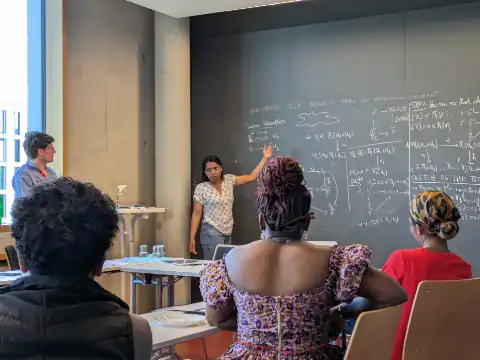

On June 31 and July 01, the STRUCTURES Cluster of Excellence had the pleasure of welcoming YAM fellows and organizers from various German clusters of excellence to this year's YAM network meeting in Heidelberg. During the meeting, which took place at the STRUCTURES “Oberstübchen”, the YAM fellows presented and discussed their research, shared experiences from their stays in Germany, and engaged in dialogue with peers and coordinators. In addition, the second day featured two talks on career opportunities for mathematicians in Germany by invited guests Dr. Helke Hillebrand (Graduate Academy Heidelberg) and Dr. Patrick Wagner (heiSKILLS Competence and Language Centre). The programme was complemented by a campus tour, a guided walk through Heidelberg's Old Town, a group dinner and several informal opportunities for networking and exchange.
The two-day meeting fostered lively discussion, providing valuable insights and new connections for both fellows and coordinators of YAM. During the final feedback session, participants shared their impressions and feedback directly with the YAM coordination team, contributing to the continuous development of the programme.
The YAM (Young African Mathematicians) Programme is a collaborative initiative between the five centres of the African Institute for Mathematical Science (AIMS – Cameroon, Senegal, Rwanda, Ghana and South Africa) and four German clusters of excellence (HCM Bonn, Mathematics Münster, MATH+ Berlin, STRUCTURES Heidelberg) that cover mathematical research. Its mission is to encourage young, talented and highly motivated graduates of the AIMS master's programme to conduct a research stay at an excellent mathematical institution in Germany. Supervised by a professor (and supported by mentors), the fellows pursue independent research and participate in a structured curriculum of courses and lectures.
More than a visiting fellowship, YAM seeks to build a strong and lasting network among young African researchers and the German mathematics community. Regular network meetings, such as the one held in Heidelberg, play a key role in fostering exchange and collaboration across institutions and continents.
STRUCTURES is proud to have been an official partner of the YAM Programme since 2023. Through its contribution to the YAM Programme, STRUCTURES aims to promote international cooperation, diversity and equal opportunities. In the first year of its contribution, STRUCTURES has hosted the YAM fellows Richarlotte Razafindravola and Olivette Tchouangnou Chuagua. In the 2024/25 period, we were happy to welcome Mina Chavelle Tchoua Tchoua, Mickaya Aimé Razanaparany, and Eunisse Nzetchuen Mangaptche. The local YAM coordination team in Heidelberg consists of Prof. Hans Knüpfer, Dr. May-Britt Becker and the STRUCTURES Office team.
Further information:
We are happy to announce the public lecture “Mathematische Experimente” by Prof. Albrecht Beutelspacher (Mathematikum Gießen), taking place on Wednesday July 2, 2025 at 5pm in the Hörsaal of the Mathematikon (INF 205), Heidelberg. In his talk, which will be in German, Prof. Beutelspacher will explore how simple materials can be used to create objects and experiments. The event is organized by the Research Station Geometry + Dynamics, with support by the STRUCTURES Cluster of Excellence.
Abstract:
Ausgehend von der Formel des Pädagogen Pestalozzi, die das Lernen "mit Kopf, Herz und Hand" thematisiert, werden aus einfachsten Materialien Objekte und Experimente hergestellt ("Hand"). Wenn man diese Objekte sorgfältig gestaltet, treten automatisch Fragen des Zusammenpassens und der Übereinstimmung von Kanten, Flächen und Winkeln auf ("Kopf"). Und da jedes dieser Objekt ein Erfolgserlebnis verspricht, entstehen auch positive Gefühle ("Herz"). In dem Vortrag werden Experimente zu Körpern (etwa zum Tetraeder und Dodekaeder) und zu Zahlen vorgeführt und auf den mathematischen Hintergrund und das didaktische Potential eingegangen. Ein Vortrag, der für alle Altersgruppen geeignet ist und sowohl Erkenntnis als auch Unterhaltung bietet.
The talk is free of charge, a registration is not necessary.
Further information:
We are delighted to announce this year's iteration of the Schöntal Discussion Workshop on “Inverse Problems,” taking place from 26th to 29th of August 2025 – once again in the tranquil and idyllic location of Schöntal Abbey. The Schöntal workshop aims to bring together early-career researchers from different scientific areas of STRUCTURES to engage in discussion over topics that go beyond the standard physics and mathematics curriculum. It especially aims at fostering vivid interdisciplinary scientific exchanges.
This year's overarching topic is “Inverse Problems,” allowing in particular interdisciplinary discussions between physicists, mathematicians and computer scientists without requiring specialized knowledge in advance. The sub-topics of the Workshop are:
- Regularization and Stability
- Bayesian Methods & Uncertainty Quantification
- Sampling & Learning-Based Methods
- Inverse Problems in Soft Matter & Liquid State Theory
The application is open until July 01, 2025. Registration is free of charge for participants from STRUCTURES. Please register via this link:
https://structures.uni-heidelberg.de/events/schoental2025/register.php
This workshop is funded by STRUCTURES' Young Researchers Convent (YRC), a subgroup of the STRUCTURES Cluster of Excellence that brings together early-career researchers of our scientific community and supports them in realizing their own projects. Any early-career researcher who is working in a field that fits into the concept of STRUCTURES can apply for a YRC membership. If your supervisor is a STRUCTURES member, you are directly eligible.
Further information:

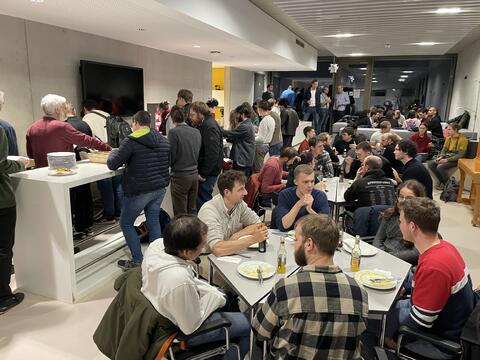
We are delighted to announce the next event in our Machine Learning Galore! series, focusing on Scientific Machine Learning, which will take place on Thursday, July 08, from 4:30 to 6:00 pm at INF 205 Mathematikon (5th floor). The event features lab presentations by principal investigators, followed by brief presentations from junior scientists showcasing their latest work. Extended discussions will offer ample opportunity for in-depth exchanges.
Event Details:
- Lab presentations:
- Klaus Maier-Hein
- Florian Nieser
- Wolfram Pernice
- Science Talks:
- Saikat Roy (Maier-Hein lab): Flash over Function: A cautionary tale of trend-chasing from Medical AI
- Daniel Schiller (Nieser-Plehn-Heneka labs, STRUCTURES): Repurposing Large Language Models for Cosmology
- Frank Brückerhoff-Plückelmann (Pernice lab): Probabilistic Photonic Computing
Registration is free but required via the ML-AI portal:
https://www.mlai.uni-heidelberg.de/en/machine-learning-talks-on-campus
About Scientific Machine Learning
Scientific Machine Learning is a collaborative initiative by the Interdisciplinary Center for Scientific Computing (IWR) and the STRUCTURES Cluster of Excellence. Its mission is to foster interaction and exchange within the local machine learning community, and to support its development by consolidating activities and resources that might otherwise remain scattered across individual institutions or disciplines. The initiative aligns closely with the objectives of STRUCTURES, which aims to advance fundamental research, and with IWR’s focus on applying machine learning to address long-standing challenges in the natural and life sciences, engineering, and the humanities.
Further information:
From Massive Stars to Gravitational Waves: Michela Mapelli Secures ERC Advanced Grant to Decode Black Hole Origins

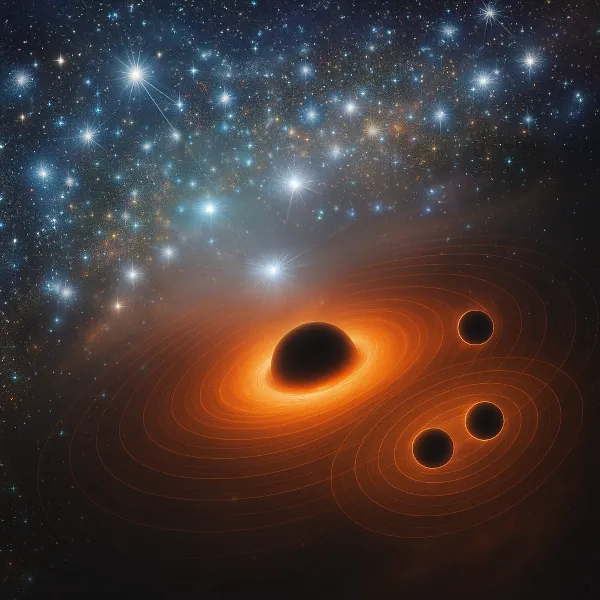
Michela Mapelli, STRUCTURES Professor of Computational Physics, receives an ERC Advanced Grant
An ERC advanced grant has been awarded to Michela Mapelli, Professor of Computational Physics at the Centre for Astronomy of Heidelberg University (ZAH). Her project “IMBLACK: Intermediate-Mass Black Holes in the Era of Gravitational-Wave Astronomy” aims to study the formation of intermediate-mass black holes with a mass ranging from 100 to 10'000 times the mass of our Sun.
“Black holes in this mass range are the most enigmatic.” – says Michela Mapelli – “We need them to explain the formation of supermassive black holes lying at the center of most galaxies, but their observational evidence is still scant, and their origin is puzzling. Gravitational-wave and electromagnetic measurements are starting to probe this mass regime, and the next-generation gravitational-wave detectors (Einstein Telescope, Cosmic Explorer, and LISA) will capture their mergers across almost the entire Universe. But even if we had such data tomorrow, we would not be able to interpret them, because theoretical models are still too uncertain.”
To gain insight into the formation of such enigmatic objects, IMBLACK will generate an ambitious set of models of very massive star evolution, runaway stellar collisions, and hierarchical mergers of binary black holes in dense star clusters across cosmic time. The new models will be compared against the data from ground-based gravitational-wave detectors (LIGO-Virgo-KAGRA) and electromagnetic candidates, including the one recently discovered by Heidelberg researchers in the Galactic globular cluster Omega Centauri.
Short Bio
Michela Mapelli studied Physics at the University of Milano-Bicocca and received her PhD in Astrophysics in 2006 from the International School for Advanced Studies (SISSA) in Trieste. After two postdoctoral fellowships in Zurich and Milan, she became permanent research staff at the Italian National Institute for Astrophysics (INAF) in 2011. She was then a fixed-term full professor at the University of Innsbruck (2017-2018), and an associate professor at the University of Padova (2018-2023). In 2023, Michela Mapelli became STRUCTURES Professor of Computational Physics and joined the Institute for Theoretical Astrophysics (ITA) at the Center for Astronomy of Heidelberg University (ZAH) as well as the Interdisciplinary Center for Scientific Computing (IWR). She has received several recognitions for her research on massive stars and black holes, including the MERAC Prize for the Best Early Career Researcher in Theoretical Astrophysics (2015) and an ERC Consolidator grant (2017).
Further Information:
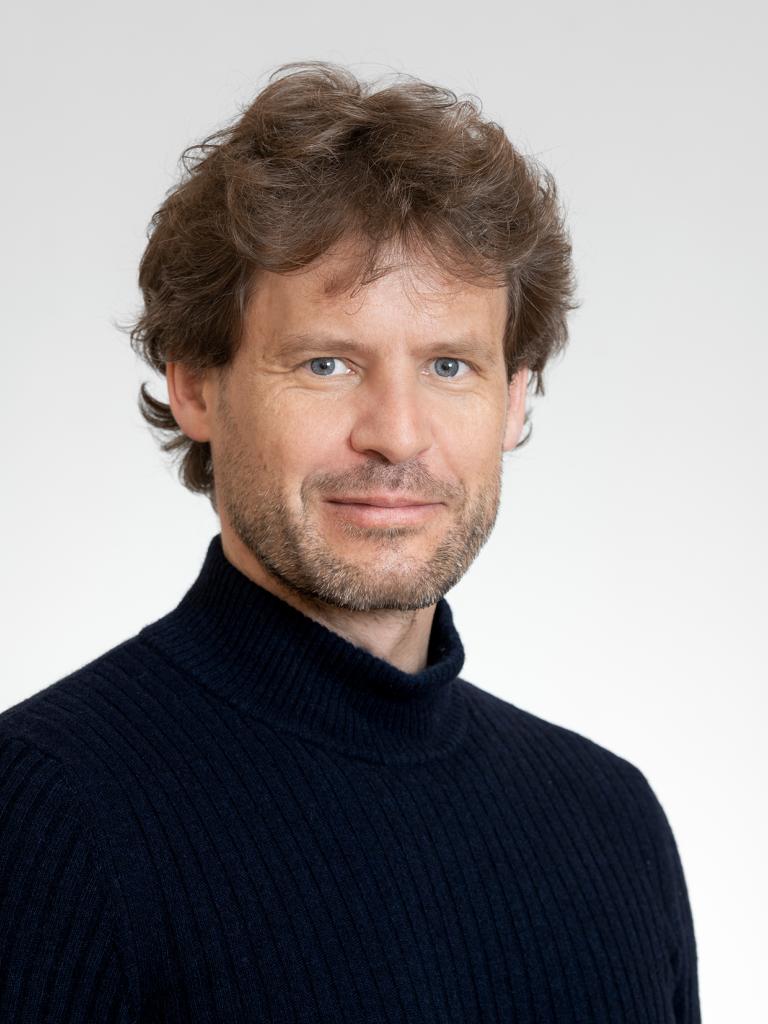
The European Research Council (ERC) has granted STRUCTURES member Wolfram Pernice an ERC Advanced Grant.
Physicist Wolfram Pernice works in the field of photonic computing on artificial neural networks, which use light instead of electrons for data processing and data communication. His current research aims to link these new technologies with processes of probabilistic computing. It involves machine learning models which, unlike determinist approaches, work with probability statements and use noise as a resource.
The project aim is to develop hybrid integrated photonic circuits that use physical randomness for ultrafast computing. This is expected to enable optical computers performing at operation rates well beyond the limits of conventional digital computing. For his ERC project “Probabilistic Photonic Computing” (PICNIC) Prof. Pernice is to receive just under 3.5 million euros in funding. The scientist has been Professor of Experimental Physics at Heidelberg University since 2021 and heads the working group on neuromorphic quantum photonics at the Kirchhoff Institute for Physics (KIP). For his research on information processing and rapid computation using light he was awarded the German Research Foundation’s Gottfried Wilhelm Leibniz Prize for 2025. The Advanced Grant marks the second time he has received funding from the ERC, after having been awarded a Consolidator Grant in 2016.
Short Bio
Wolfram Pernice studied microsystems engineering at the University of Freiburg and computer science at Indiana University, Bloomington, USA. He obtained his doctorate at the University of Oxford, UK, in 2007. A year later, he moved to Yale University, USA, sponsored by the Alexander von Humboldt Foundation, and in 2011, he became head of an Emmy Noether junior research group at Karlsruhe Institute of Technology. In 2015, he accepted a professorship at the University of Münster. Since 2021, Pernice has been a professor at KIP and the STRUCTURES Cluster of Excellence at the University of Heidelberg. In 2013, he was elected to the Junge Akademie at the Berlin-Brandenburg Academy of Sciences and Humanities (BBAW) and the German National Academy of Sciences Leopoldina. He received an ERC Consolidator Grant in 2016, and in 2019, he was a successful participant in the Volkswagen Foundation’s programme Momentum. In 2025 he received the German Research Foundation’s prestigious Gottfried Wilhelm Leibniz Prize.
Weblinks:

The MuT programme (Mentoring and Training) for early-career female researchers offers workshops on appointment processes, profile building, leadership, and negotiation for postdoc researchers in Baden-Württemberg. Funded by the Ministry of Science, Research and the Arts, the programme aims to support female academics, especially on the path to a professorship, through mentoring and training. Interested individuals can join the programme at any time and participate in workshops independently.
The event programme and registration form can be found here:
https://lakog-bw.de/veranstaltungen/ (in German only).
LaKoG is an association of equal opportunities officers at research universities, universities of education, as well as universities of art and design and universities of music and performing arts in Baden-Württemberg. Its core activities aim to encourage women to take up an academic career and to make their contributions visible, as well as supporting them by reducing structural barriers and discriminatory structures, promoting equal opportunities and enhancing the compatibility of career and family.
Further information:
